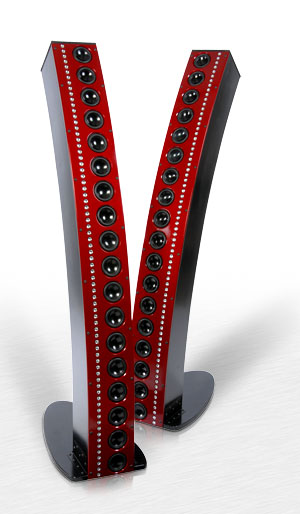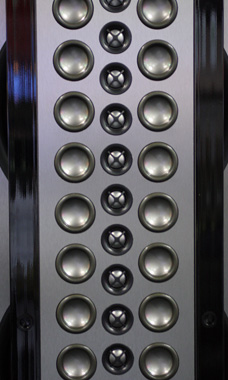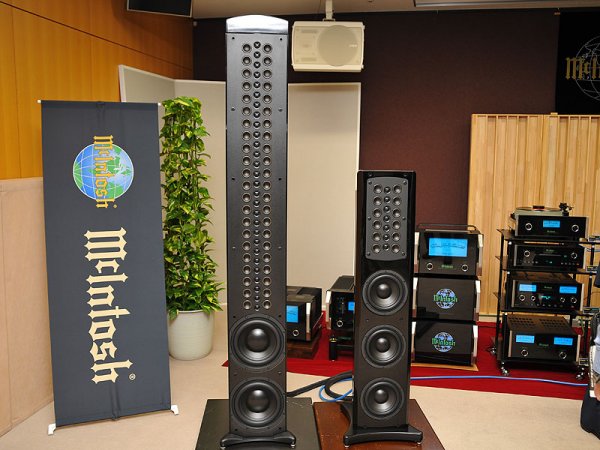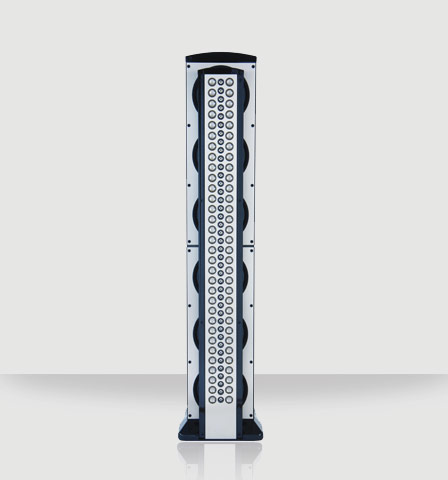You mean something like this? 8 feet tall, 32 feet wide.
Has anyone heard it? What's the brand? ..Can this sound good? ... At least it looks like it can play at lethal level if needed
Plus Gary that is not a panel speaker that is a "wall" speaker
You mean something like this? 8 feet tall, 32 feet wide.
Traditional box speakers have gotten so good, do we really need panel speakers in 2012?
Has anyone heard it? What's the brand? ..Can this sound good? ... At least it looks like it can play at lethal level if needed
Plus Gary that is not a panel speaker that is a "wall" speaker
Thats a hell of a reference ...
(...) moving coil drivers still seem to be the best at replicating the powerof a full sym orch especially in the bass. conversley i have yet to hear a moving coil driver match a 'stat for midrange purity/transparency.
"Gary , did say the newest generations are a vast improvement over previous"
Isn't that always the case. How else could they get you to get rid of what they used to tell you was the greatest thing since sliced bread at a huge loss and buy a new one to replace it for a lot more money? Do you think these people are in business for the fun of it?
I have also really enjoyed the ML Statement E2, but the sweet spot is rather small, especially when you compare it to the Infinity IRS or Genesis 1.x lines.
One day I'm going to test my theory that the advantage of panel speakers is that they radiate their sound over a large area by building a large surface array using ordinary drivers. I've got close to 600 tweeters in my basement already, most of them 3/8" polys. I'll wait until I have some time and Dayton has a big sale on something really hot in the way of small midwoofers.
I've heard the ML Summit and more recently some very large Soundlabs. I was not particularly impressed. They both have a peculiar upper treble coloration to my ears. I guess I'm not an electrostatic fan. The MLs had a lot of other colorations too. Both had disappointing bass especially for such expensive speakers. The MLs are hybrids with conventional woofers. For ten grand list a pair they should do a lot better IMO.
I fully agree with your view, but if you are prepared to accept some limitations in the very low bass, big panels such as SoundLabs can sound powerful in symphonic music if used with very powerful tube amplifiers.
That will be extremely interesting. If you can have the entire front wall covered in drivers, and the side and back walls completely absorb, you will create a plane-source. That is the Holy Grail of loudspeaker design. A Wall of Sound.
However, recordings are not made for this plane wave. There have been some interesting studies made in wave field synthesis that may make this the ideal.
Parts-Express had on their catalog cover last year a tall skinny and arched back line source speaker. Plans are on-line and free.One day I'm going to test my theory that the advantage of panel speakers is that they radiate their sound over a large area by building a large surface array using ordinary drivers.




Parts-Express had on their catalog cover last year a tall skinny and arched back line source speaker. Plans are on-line and free.
http://www.parts-express.com/cbt36/
View attachment 6953
A<snip>
I'm sure you could find something in the DIY Audio forum if you searched it.I am curious about this speaker the theory behind is quite interesting ... Has anyone heard it?
Parts-Express had on their catalog cover last year a tall skinny and arched back line source speaker. Plans are on-line and free.
http://www.parts-express.com/cbt36/
View attachment 6953
Also isn't your theory already built by McIntosh in several versions?
http://www.shows.soundstagelive.com/shows/avtour2005/ced_showstoppers_5.shtml
View attachment 6954
http://av.watch.impress.co.jp/img/avw/docs/404/909/html/ias1_31.jpg.html
View attachment 6955
http://www.transtec.nl/index.php?l=...and=mcintosh&sub=leftsub6&page=mcintosh.xrt2k
View attachment 6956
I am curious about this speaker the theory behind is quite interesting ... Has anyone heard it?
| Steve Williams Site Founder | Site Owner | Administrator | Ron Resnick Site Owner | Administrator | Julian (The Fixer) Website Build | Marketing Managersing |






